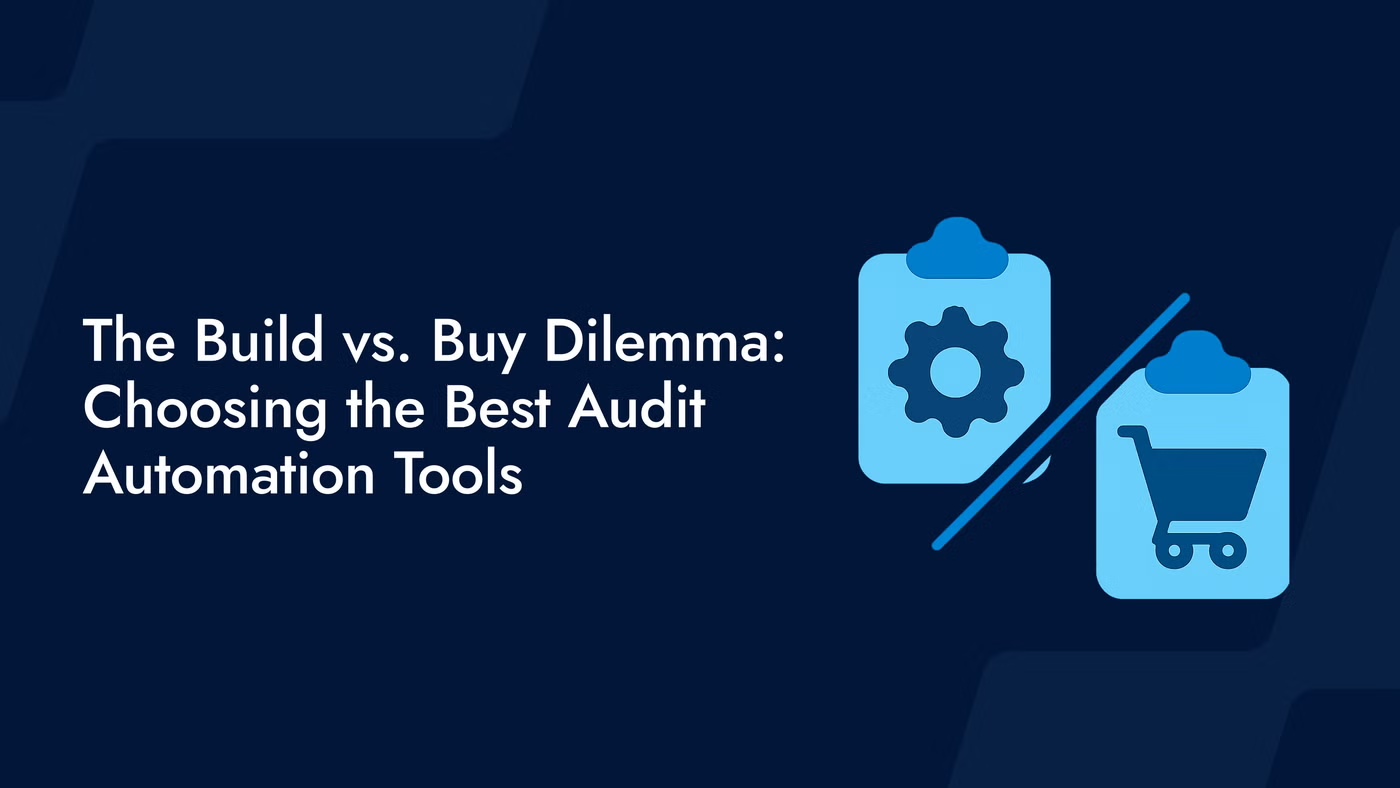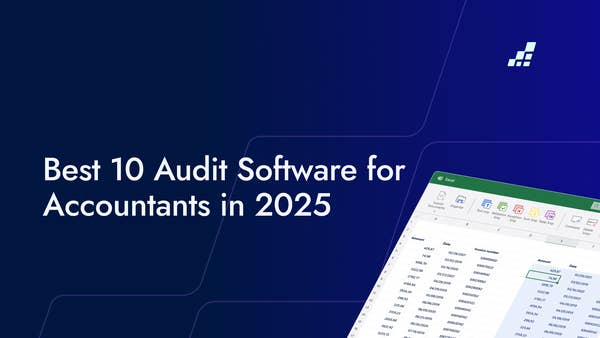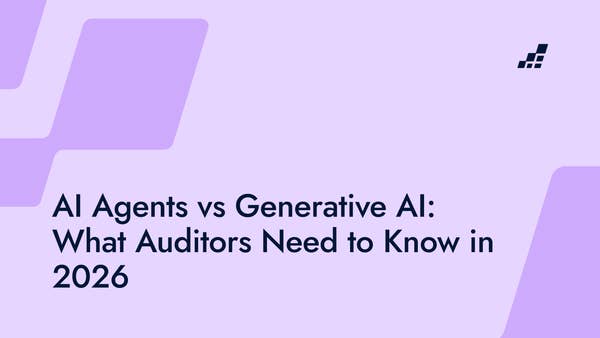- /
- Blog
The Build vs. Buy Dilemma: Choosing the Best Audit Automation Tools

At DataSnipper Connect’25 in Amsterdam, Max Schmolke, Sr. Solution Engineer at DataSnipper sat down with Will Hyde, Audit Data Analytics Specialist at Moore Kingston Smith to explore one of the most relevant decisions facing audit and finance teams today: should you build software in-house or buy it off the shelf?
With AI rapidly shifting what’s possible, the session offered practical insights and real-world examples of how firms are navigating this choice in a changing landscape.
Watch the full session from Connect’25 Amsterdam below to hear directly from the experts:
How AI is blurring the line between building and buying audit tools
Buying used to mean getting a commercial product and building meant hiring developers, managing infrastructure, and starting from scratch. But AI has shifted those definitions.
“You can sort of make your own custom ChatGPTs, which can arguably be a build solution,” says Hyde. “If you share that with other people in your team, it can actually help your workflow and sit right inside your processes.”
In other words, building no longer has to mean complex coding. AI has made it easier for firms to tailor workflows without developing full platforms. But the core question remains: when should you do it yourself, and when is it better to buy?
When buying audit automation tools makes business sense
For Hyde and his team, buying is the obvious choice when:
- The tool solves the problem effectively
- The tech is outside their core expertise
- The vendor is ahead of the curve in specialized features
DataSnipper is one such example. “We’re not going to go out there and try to rebuild DataSnipper,” says Hyde. “It does what it does well that there’s not any point.”
OCR and screen reading capabilities are a key part of that value. These are highly specialized technologies that require deep technical expertise. Instead of building these features internally, Moore Kingston Smith chooses vendors who already do them well.
What to expect from vendors of audit automation software
When buying software, functionality is only part of the decision. Just as important is how well a vendor supports onboarding and adoption.
Hyde emphasizes the value of a "train the trainer" approach where key team members are equipped with the knowledge and materials to train others internally. This model allows firms to scale usage without depending on external sessions every time a new team is onboarded.
Good vendors don’t just hand over licenses. They offer clear use cases, tailored training, and ongoing support that reflects how your teams actually work. Practical guidance makes all the difference, especially when rolling out tools across multiple departments or locations.
Buying audit automation tools means staying ahead
One major advantage of buying is that you’re not just getting a tool. You’re gaining access to a team that is fully focused on improving it. Vendors continue to enhance their products based on user feedback, regulatory updates, and advances in technology. As a result, the product keeps evolving while your team benefits without taking on the development burden.
This is especially valuable in fast-moving areas like audit and AI. Many tools on the market today have been refined over years. When you build internally, you start from zero. By the time your team catches up, the pre-built tools have already advanced again. This creates a cycle where internal builds are constantly playing catch-up. Choosing to buy is not just about faster delivery. It is about staying ahead and focusing internal efforts where they can make the greatest impact.
Choosing AI audit vendors: why background checks matter
While buying can offer clear advantages in speed and innovation, it also comes with potential pitfalls. Not all vendors are equal, especially in the AI boom. Hyde stressed the importance of understanding a vendor’s background and track record before adopting any new solution.
With new AI companies popping up weekly, there’s a risk of buying into flashy tools that are poorly built.
Before adopting a new tool, ask:
- Where is the data stored?
- Who has access to it?
- Does the vendor meet compliance standards?
Why some firms choose to build custom audit AI tools
Building makes sense when off-the-shelf tools don’t meet expectations and the team has the internal knowledge to do better. For Hyde’s team, this was the case with journal testing software. Several of their accountants had learned to code, giving them the skills to design a solution that fit their needs. They had a clear vision for what the tool should do and the confidence to maintain and improve it over time.
Building can be the right choice when:
- No current solution fits your needs
- Your team has internal technical skills
- You want more control and customization
Building the skills to build the tools
At Moore Kingston Smith, several team members who originally worked as accountants transitioned into development roles. They started automating workflows using Excel macros and gradually moved into more advanced tooling, eventually adopting GitLab and version control systems.
According to Hyde, learning to code wasn’t the biggest challenge. With the right motivation, accountants could pick up the basics of coding in a matter of weeks. Their understanding of audit workflows gave them a major advantage, one that allowed them to build tools that fit the job precisely.
The risks and responsibilities of building audit technology
Building internally isn’t just about launching a tool. It’s about maintaining it, documenting it, and auditing it, especially in regulated environments.
Hyde’s team works closely with their internal technical team through regular meetings to review the tools they develop. They also brought in a third-party reviewer to independently verify that their algorithms function as intended.
As Hyde put it during the session, “Who’s auditing the auditor?” It is a question that teams need to take seriously when developing their own solutions.
These kinds of failures highlight why strong oversight is essential, even for tools that appear simple to create. For example, building a custom ChatGPT may seem accessible, as mentioned earlier, but ease of setup does not remove the complexity. These tools still raise important questions around data privacy, security, and integration with legacy systems. Even lightweight builds require careful evaluation, not only before rollout but also throughout their use, to ensure they remain reliable, compliant, and aligned with internal standards.
How to calculate ROI
To assess ROI on their in-house journal testing tool, Hyde’s team didn’t just look at cost savings. They ran anonymized comparisons, asking auditors to rate results from both the new and old tools without knowing which was which. This approach helped remove bias and capture honest reactions about usability and quality. Rather than relying on charge-out rates or usage data, they placed greater weight on qualitative insights.
In audit, qualitative ROI can be measured in several practical ways, such as:
- Time saved per engagement on manual tasks like journal testing
- Fewer review notes from senior staff, indicating improved accuracy and efficiency
- Reduced client follow-ups, thanks to clearer and more complete documentation
- Comparison testing results, revealing unbiased auditor preferences between tools
These metrics help teams determine whether a tool is delivering real value—beyond just the numbers.
Can build and buy coexist?
Hyde described a workflow where auditors use tools like DataSnipper to extract structured data from documents, then build on top of that with custom workflows when needed.
“Off-the-shelf tools cover 90 percent of what we need,” he said. “That last 10 percent, where you need custom calculations or logic, is where we come in.”
The coexistence of build and buy is not just possible but practical. Off-the-shelf tools handle repeatable tasks at scale, while custom builds address firm-specific needs with greater precision.
Final takeaway: how to decide between building or buying audit automation tools
Deciding whether to build or buy depends on several factors: your team’s capabilities, the complexity of the problem, and the quality of available solutions. Some needs are best met with trusted, ready-made tools. Others are better served by building internally to meet specific requirements.
As technology continues to evolve, the goal is not to choose one approach over the other. It is to make thoughtful decisions based on what delivers the most value. That includes carefully evaluating vendor backgrounds, ensuring oversight of internally built tools, and aligning each decision with your team’s goals and risk environment. Build where it matters, buy where it fits, and design your process to deliver impact.


.png?width=600&quality=70&format=auto&crop=16%3A9)
